“World War II: Adolf Hitler and Operation Foxley – British Assassination Plot” has been added to your cart. View cart
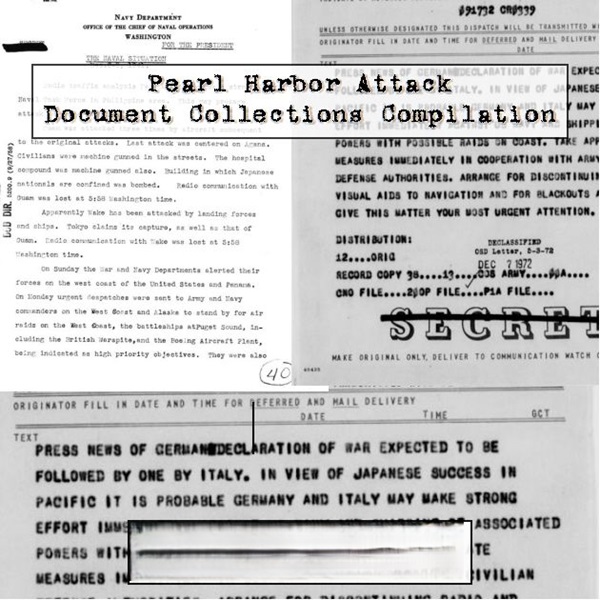
Description
Pearl Harbor Attack: Timeline and Key Figures
Timeline of the Pearl Harbor Attack
The provided sources primarily focus on the documentation and aftermath of the Pearl Harbor attack rather than providing a sequential narrative of the attack itself. However, they establish key dates and periods for the intelligence gathering, attack, and subsequent investigations.
- Fall 1940: United States Army cryptanalysts successfully break some of the Japanese Foreign Office’s highest-grade cryptographic systems. This marks the beginning of “MAGIC” intelligence, allowing the interception, decryption, and translation of secret Japanese diplomatic messages worldwide on a current basis. (Source: “Pearl Harbor Attack: MAGIC Army Interception of Japanese Communications”)
- December 7, 1941: The Japanese attack on Pearl Harbor occurs. This is the central event around which all documents, reports, and investigations revolve. (Repeatedly mentioned across all sources)
- During the Attack (December 7, 1941): US Navy photography is taken, and messages and dispatches are sent from Pearl Harbor. (Source: “Pearl Harbor Attack: Photography”)
- December 8, 1941 onwards: “Man on the Street” interviews and radio news broadcasts cover the immediate aftermath of the attack. (Source: “Pearl Harbor Attack: Day After Pearl Harbor ‘Man on the Street’ Interviews and Pearl Harbor Attack Radio News Broadcasts”)
- February 15, 1942: The Commander-in-Chief, U.S. Pacific Command (CINCPAC) report, titled “Report of Raid on Pearl Harbor, 7 December 1941,” is completed and submitted to the Secretary of the Navy. This report covers the activities of the U.S. Pacific Fleet during the attack. (Source: “Pearl Harbor Attack: Commander-in-Chief, U.S. Pacific Command (CINCPAC) Documents”)
- Post-December 7, 1941 (Exact dates not specified but implied throughout):Damage reports and photographs of the Pearl Harbor attack are compiled. (Source: “Pearl Harbor Attack: Damage Reports & Photos”)
- Military files related to the attack are sent to and maintained in the White House war room. (Source: “Pearl Harbor Attack: White House War Room Military Files”)
- FBI files are compiled on convicted Pearl Harbor spy Bernard Julius Otto Kuehn. (Source: “Pearl Harbor Attack: Pearl Harbor Spy Bernard Kuehn FBI File”)
- The Franklin D. Roosevelt administration engages in internal debate over the decision to intern Japanese Americans. (Source: “Pearl Harbor Attack: Franklin D. Roosevelt Presidential Papers”)
- 1957: William Friedman prepares his report on the Pearl Harbor Attack, utilizing documents and reports from the Army Security Agency and other military intelligence agencies. (Source: “Pearl Harbor Attack: Army Security Agency Files – NSA Pearl Harbor Study”)
- Until 1994: Much of the material concerning damage reports and photos from the Pearl Harbor attack remains classified. (Source: “Pearl Harbor Attack: Damage Reports & Photos”)
- Prior to 2002: The Combatant Commander of United States Pacific Command held the title of Commander-in-Chief, U.S. Pacific Command (CINCPAC). (Source: “Pearl Harbor Attack: Commander-in-Chief, U.S. Pacific Command (CINCPAC) Documents”)
- January 2013: The actual pages of the CINCPAC “Report of Raid on Pearl Harbor, 7 December 1941” are officially declassified. (Source: “Pearl Harbor Attack: Commander-in-Chief, U.S. Pacific Command (CINCPAC) Documents”)
- Until 2015: Some material used by William Friedman for his 1957 report on the Pearl Harbor Attack, originating from Army Security Agency and other military intelligence agencies, remained classified. (Source: “Pearl Harbor Attack: Army Security Agency Files – NSA Pearl Harbor Study”)
Cast of Characters
- Franklin D. Roosevelt: (US President) – The President of the United States during the Pearl Harbor attack. His presidential papers and administration’s internal debates are documented, particularly concerning the internment of Japanese Americans.
- William Friedman: (US Cryptanalyst/Intelligence Official) – A key figure in US intelligence, responsible for a 1957 report on the Pearl Harbor Attack. His work drew upon files from the Army Security Agency and other military intelligence agencies.
- Bernard Julius Otto Kuehn: (Convicted Pearl Harbor Spy) – An individual whose FBI files are part of the documented evidence related to the Pearl Harbor attack, indicating his role as a spy.
- Commander-in-Chief, U.S. Pacific Command (CINCPAC): (US Military Title/Office) – The head of the U.S. Pacific Command. This office compiled a significant report on the Pearl Harbor raid in February 1942, detailing the activities of the U.S. Pacific Fleet.
- United States Army cryptanalysts: (Unspecified Individuals) – A group of skilled individuals within the US Army who successfully solved high-grade Japanese cryptographic systems in the fall of 1940, leading to the “MAGIC” intelligence program.
- Secretary of the Navy: (US Government Official) – The recipient of the CINCPAC report on the Pearl Harbor raid in February 1942.
Related products
-
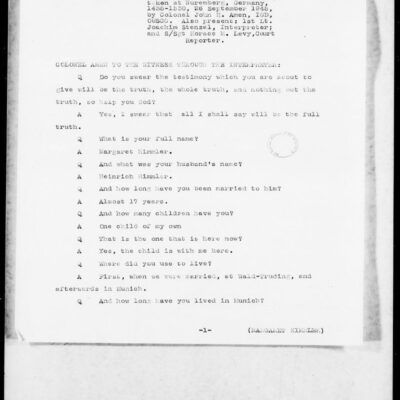
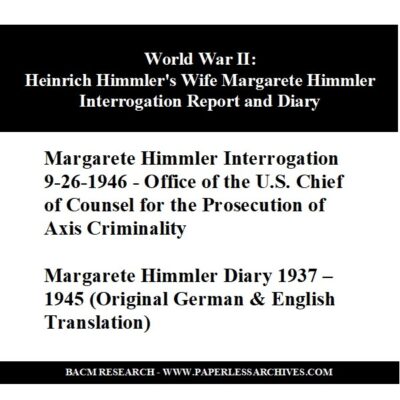
World War II: Interrogation Report and Diary of Margarete Himmler, Wife of Heinrich Himmler
$3.94 Add to Cart -
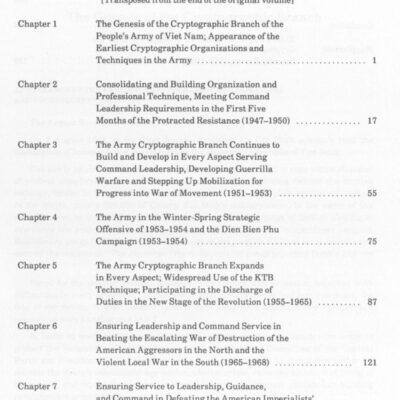
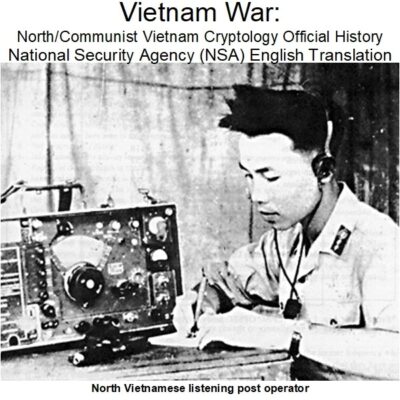
Vietnam War: Cryptology in North Vietnam – NSA Official History
$4.90 Add to Cart -
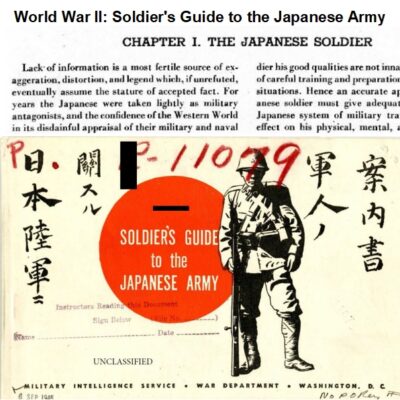

World War II: A Soldier’s Handbook on the Japanese Army
$3.94 Add to Cart -
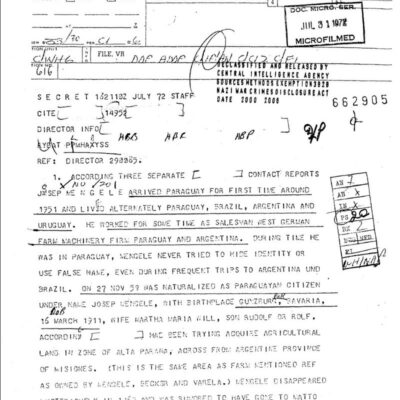
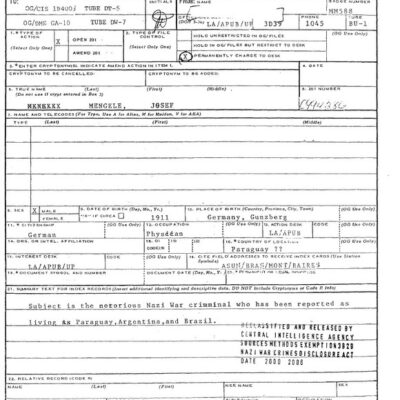
Josef Mengele CIA Files
$19.50 Add to Cart